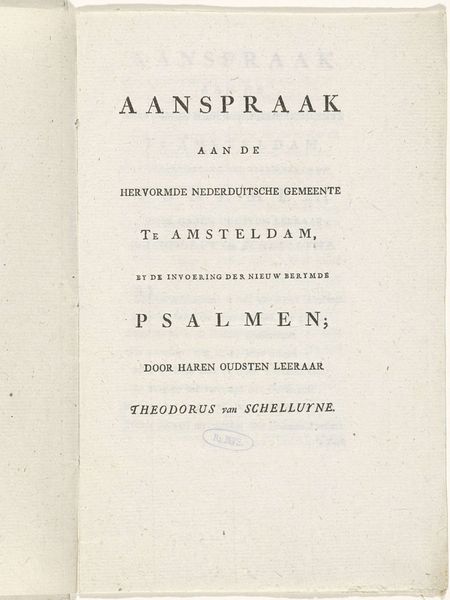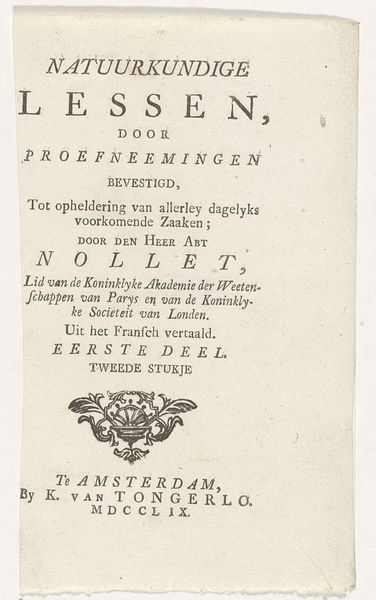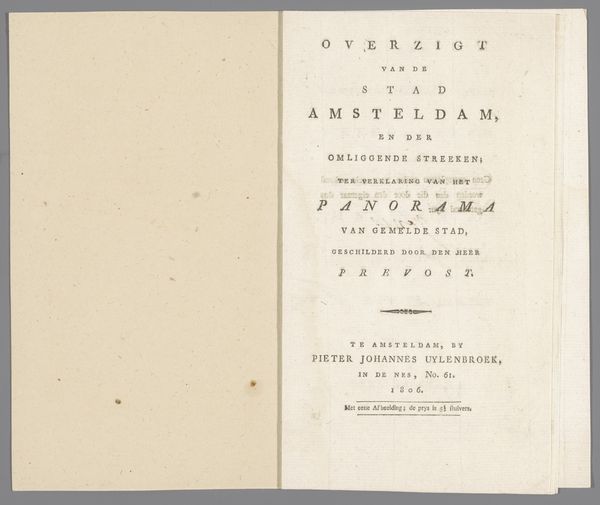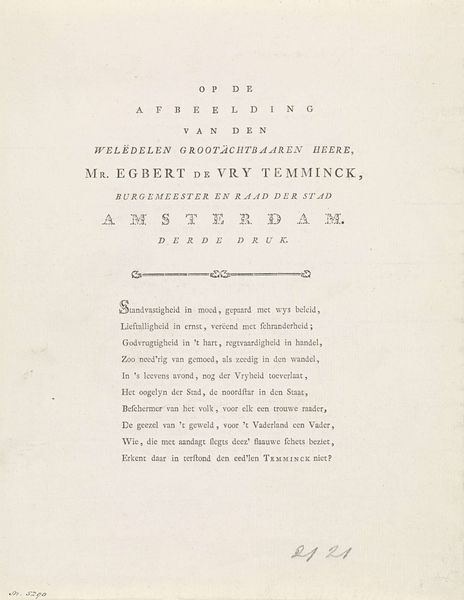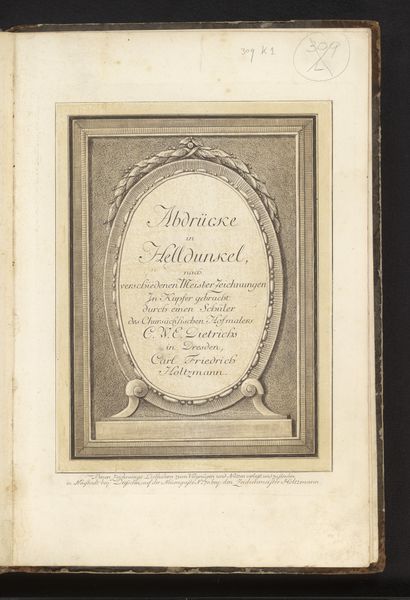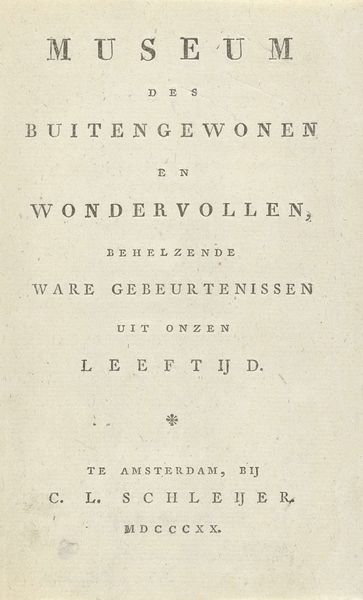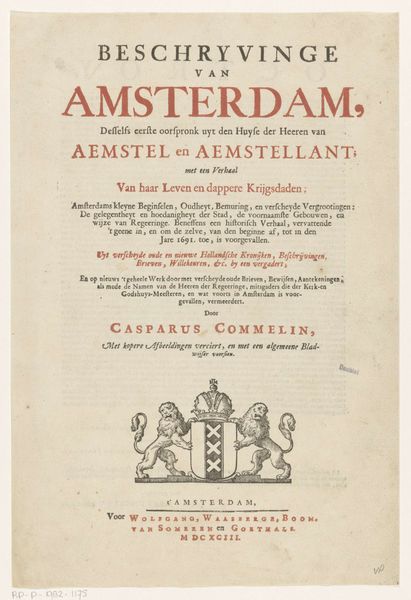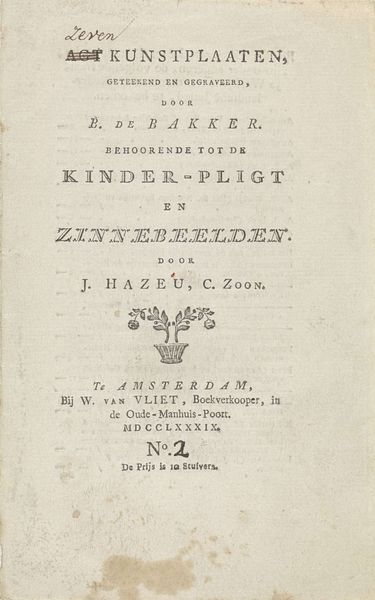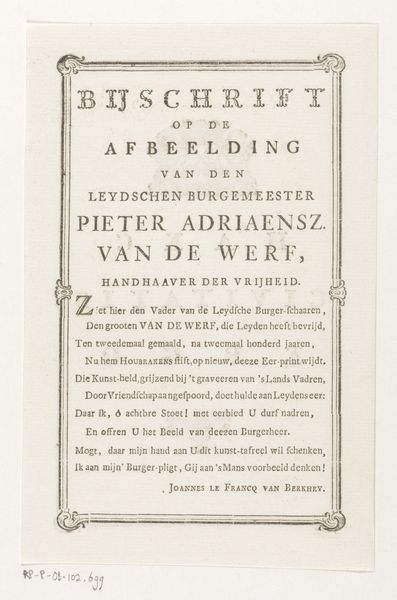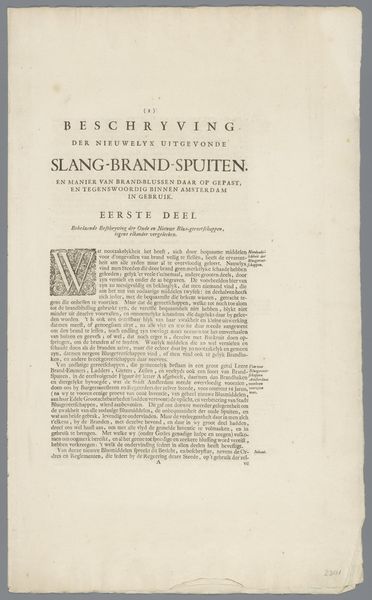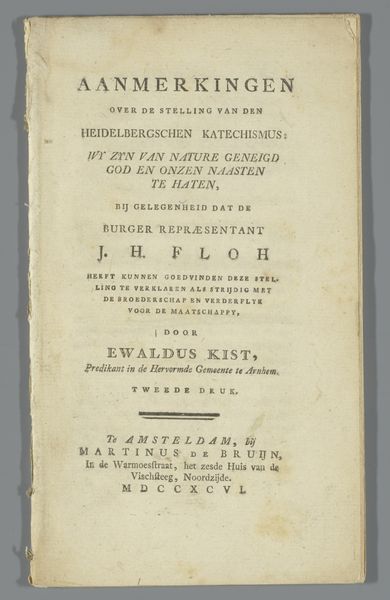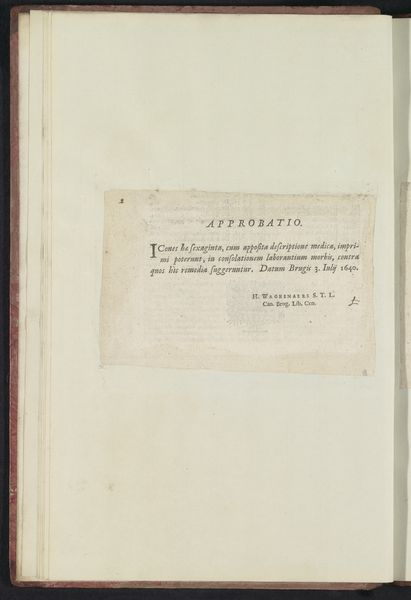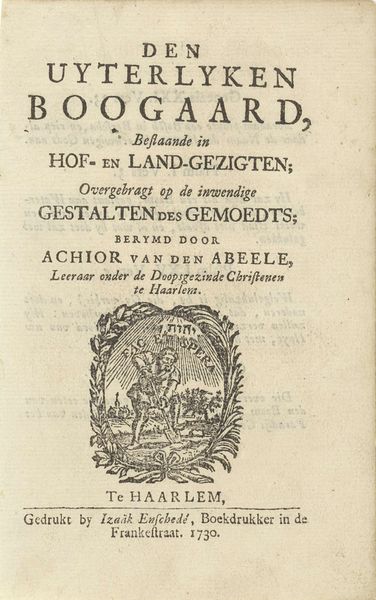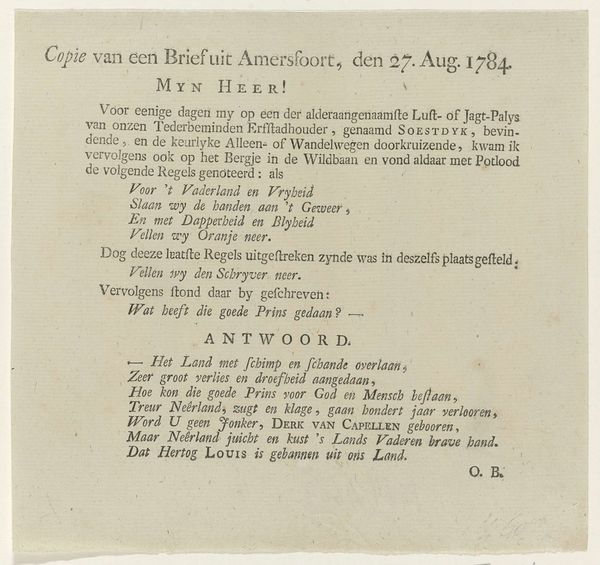
Antwoord van Pieter Dwars-Doelen, scheepstimmerman op de werf Vrijheid en Eendracht, aan den vermaarde schryver van de Aanspraak 1780
0:00
0:00
print, paper
#
dutch-golden-age
# print
#
paper
#
calligraphy
Dimensions: height 22.2 cm, width 13.4 cm
Copyright: Rijks Museum: Open Domain
Curator: This intriguing printed piece is entitled "Antwoord van Pieter Dwars-Doelen, scheepstimmerman op de werf Vrijheid en Eendracht, aan den vermaarde schryver van de Aanspraak," dating from 1780. It is a print on paper, characteristic of the Dutch Golden Age's typography. Editor: Ah, so it’s a printed response. My immediate impression is… restrained fury. The text is packed onto the page like tightly coiled rope. You sense there’s passion boiling just beneath that very orderly surface. Curator: That coiled energy probably arises from its socio-political moment. The pamphlet wars of the late 18th century involved responses to philosophical, economic, and ultimately political issues. Its material form reflects this contentious discourse through widespread print. Editor: True, I am very interested in the material. How does this broadside relate to the actual labor of Pieter Dwars-Doelen, the shipbuilder. Were pamphlets commonly read amongst workers in the shipyard? Curator: The context suggests it certainly would. The very naming of the shipyard “Vrijheid en Eendracht”, or "Freedom and Unity", directly hints at republican values fermenting. Consider this less about "high art" and more about accessing emerging discourses regarding social contract theory that was circulating even within Dutch artisanal trades. Editor: A direct line from shipyard to societal discourse, quite literally! Yet it is not embellished, visually spare as though words were crafted for maximum force—more manifesto than visual art. And I feel the material – the paper itself -- adds to the fragility. It conveys immediacy and urgency, as though waiting would have rendered the message irrelevant. Curator: That fragility underscores your perception. Unlike durable oil paintings, printed pamphlets like these were ephemeral, often disposed after reading. But this ephemerality allowed a widespread distribution and thus amplified socio-political engagement from all sectors. Editor: It's funny to consider ephemerality as empowerment. A potent thing, a single printed response from a craftsman, resonating even now across time. A material artifact buzzing with discourse from below, demanding attention. Curator: Yes, exactly. From examining process to reflecting upon social and material contexts, hopefully, our approach brings new attention to such overlooked yet deeply resonating material of history.
Comments
No comments
Be the first to comment and join the conversation on the ultimate creative platform.
